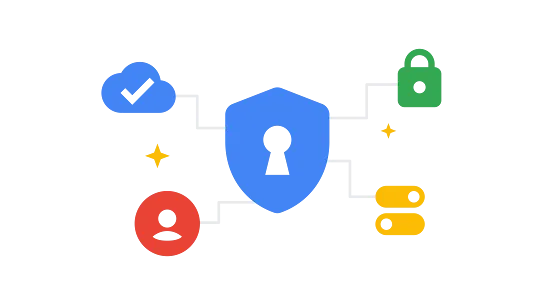
Google's Secure AI Framework
(SAIF)
The potential of AI, especially generative AI, is immense. As innovation moves forwards, the industry needs security standards for building and deploying AI responsibly. That's why we introduced the Secure AI Framework (SAIF), a conceptual framework to secure AI systems.
Six core elements of SAIF
-
Expand strong security foundations to the AI ecosystem
-
Extend detection and response to bring AI into an organisation's threat universe
-
Automate defences to keep pace with existing and new threats
-
Harmonise platform-level controls to ensure consistent security across the organisation
-
Adapt controls to adjust mitigations and create faster feedback loops for AI deployment
-
Contextualise AI system risks in surrounding business processes
Enabling a safer ecosystem



Additional resources
Common questions
about SAIF
Google has a long history of driving responsible AI and cybersecurity development, and we have been mapping security best practices to AI innovation for many years. Our Secure AI Framework is distilled from the body of experience and best practices that we've developed and implemented, and reflects Google's approach to building ML and generative-AI-powered apps with responsive, sustainable and scalable protections for security and privacy. We will continue to evolve and build SAIF to address new risks, changing landscapes and advancements in AI.
See our quick guide to implementing the SAIF framework:
- Step 1 – Understand the use
- Understanding the specific business problem that AI will solve and the data that's needed to train the model will help drive the policy, protocols and controls that need to be implemented as part of SAIF.
- Step 2 – Assemble the team
- Developing and deploying AI systems, just like traditional systems, is a multidisciplinary effort.
- AI systems are often complex and opaque, include large numbers of moving parts, rely on large amounts of data, are resource intensive, can be used to apply judgement-based decisions, and can generate novel content that may be offensive, harmful, or can perpetuate stereotypes and social biases.
- Establish the right cross-functional team to ensure that security, privacy, risk and compliance considerations are included from the start.
-
Step 3 – Level-set with an AI primer
- As teams embark on evaluating the business use of AI, and the various and evolving complexities, risks and security controls that apply, it is critical that all parties involved understand the basics of the AI-model-development life cycle and the design and logic of the model methodologies, including capabilities, merits and limitations.
-
Step 4 – Apply the six core elements of SAIF
- These elements are not intended to be applied in chronological order.
Stay tuned! Google will continue to build and share Secure AI Framework resources, guidance and tools, along with other best practices in AI application development.
Why we support a secure AI community for everyone











